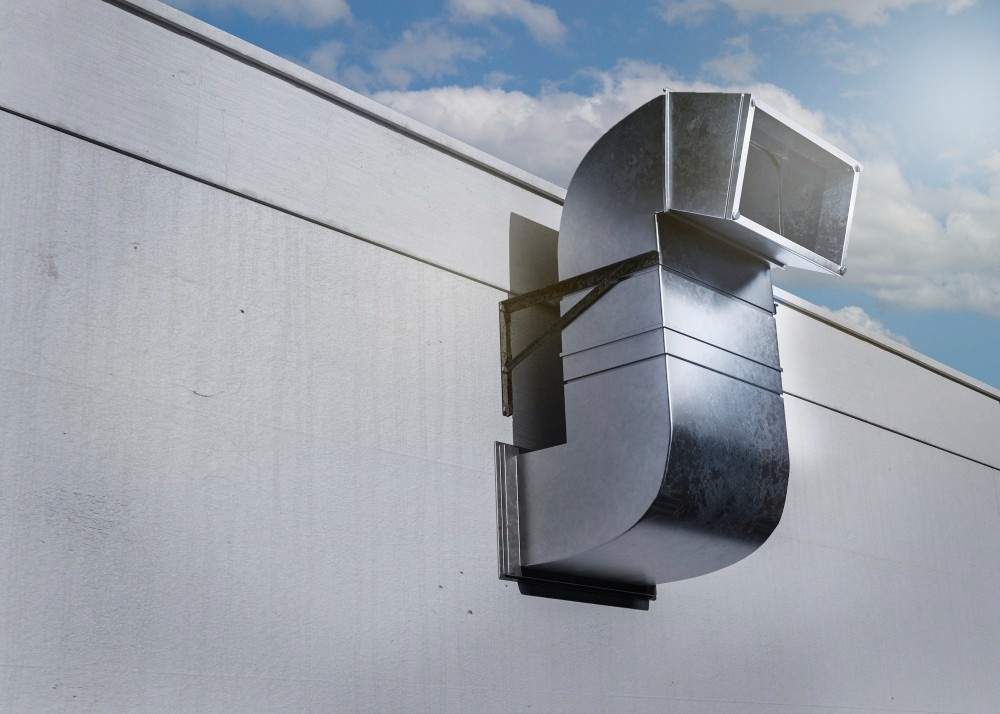
How Does Factory Ventilation and Air Quality Affect Productivity?
There are many machines, workers, and materials in factories that require clean air to function properly.
Poor ventilation and air quality can have a significant affect on both the productivity level and compliance with the regulations relating to safety. This article will explain the purpose of proper ventilation, the steps for improving ventilation, and everything related to it.
The Importance of Ventilation in Industrial Spaces
There are a variety of airborne contaminants, such as dust, fumes, and heat, that are produced by industrial operations. These factors can cause health hazards, equipment damage, and regulatory violations without proper ventilation. A proper ventilation system removes pollutants and maintains an optimal airflow, making workplaces safer.
We’ve observed that manufacturing, pharmaceuticals, and chemical processing all require adequate ventilation to prevent respiratory problems, maintain equipment longevity, and meet environmental standards.
How Poor Air Quality Affects Overall Productivity?
1. Employee Health and Well-being
People who are exposed to poor air quality for long periods of time are more likely to suffer headaches, fatigue, and respiratory problems. This often leads to higher absenteeism and lower productivity. Keeping a factory well ventilated keeps workers healthier and more productive.
2. Impact on Machinery and Product Quality
Factory machinery breakdowns are frequent when there’s a lot of dust and airborne particles. Aside from clogging ventilation systems, contaminants can make equipment less efficient.
3. Temperature Control and Comfort
In factories, too much heat makes workers uncomfortable and makes them less productive. With the right ventilation, excess heat is eliminated and fresh air can circulate, making the work environment more pleasant.
Compliance with Environmental & Workplace Safety Regulations
Governments and regulatory bodies enforce strict air quality standards in industrial environments.
In India, laws like the Factories Act, 1948, and the National Ambient Air Quality Standards (NAAQS) mandate that industries maintain proper ventilation and pollution control measures.
1. Occupational Safety Compliance
Regulatory bodies like the Central Pollution Control Board (CPCB) and State Pollution Control Boards (SPCBs) set guidelines for workplace air quality. Failure to meet these standards can result in fines, legal actions, or even shutdowns. Installing efficient ventilation systems ensures compliance and prevents costly penalties.
2. Industry-specific Air Quality Standards
Certain industries, such as pharmaceuticals and food processing, require stringent air filtration to prevent contamination. Adhering to Good Manufacturing Practices (GMP) ensures compliance with industry norms while enhancing product safety and quality.
3. Energy Efficiency and Sustainability Goals
Proper ventilation reduces energy consumption by optimizing air circulation and reducing the need for artificial cooling. Industries adopting green building standards benefit from reduced carbon footprints, lower energy bills, and improved corporate reputation.
Types of Factory Ventilation Systems
A variety of ventilation systems are available to meet the needs of different industries. These include the following.
1. Natural Ventilation
A strategic placement of openings like windows, vents, and skylights lets natural air flow in. Although it’s economical and energy-efficient, it may not be suitable for heavily polluted industrial environments.
2. Mechanical Ventilation
A mechanical system controls airflow with fans, blowers, and exhaust systems. Exhaust ventilation removes contaminated air, while supply ventilation introduces fresh air into the workspace. A combination of both ensures balanced air circulation.
3. Dilution Ventilation
This system dilutes contaminants in the air by adding fresh air, reducing overall pollutant concentrations. It is commonly used in factories where toxic fumes are minimal but airflow control is essential.
4. Local Exhaust Ventilation (LEV)
LEV systems are designed to capture pollutants at their source before they spread. Industries dealing with welding, chemical fumes, or hazardous dust benefit greatly from these targeted extraction units.
4 Steps to Improve Factory Ventilation & Air Quality
1. Conduct an Air Quality Assessment
Regular air quality monitoring helps identify contaminants, assess airflow efficiency, and determine necessary improvements. Installing IoT-enabled air quality sensors provides real-time data for better decision-making.
2. Upgrade the Ventilation Systems
Replacing outdated ventilation systems with modern energy-efficient units improves air quality while reducing operational costs. High-efficiency particulate air (HEPA) filters and activated carbon filtration systems effectively remove airborne toxins.
3. Implement Proper Airflow Design
Factory layouts should be designed to promote airflow efficiency. Placing exhaust fans, air inlets, and ductwork strategically helps prevent air stagnation and improves circulation.
4. Train Employees on Air Quality Practices
Educating employees on best practices, such as minimizing pollutant sources and maintaining clean workspaces, enhances overall air quality management. Making sure you use personal protective equipment (PPE) properly adds another layer of safety.
Conclusion
In factories, ventilation and air quality play a huge role in worker health, productivity, and compliance.
For expert advice on factory design including ventilation systems, VMS Consultants provides comprehensive engineering, architecture, and project management solutions.
Partner with VMS to create sustainable and efficient industrial spaces.





